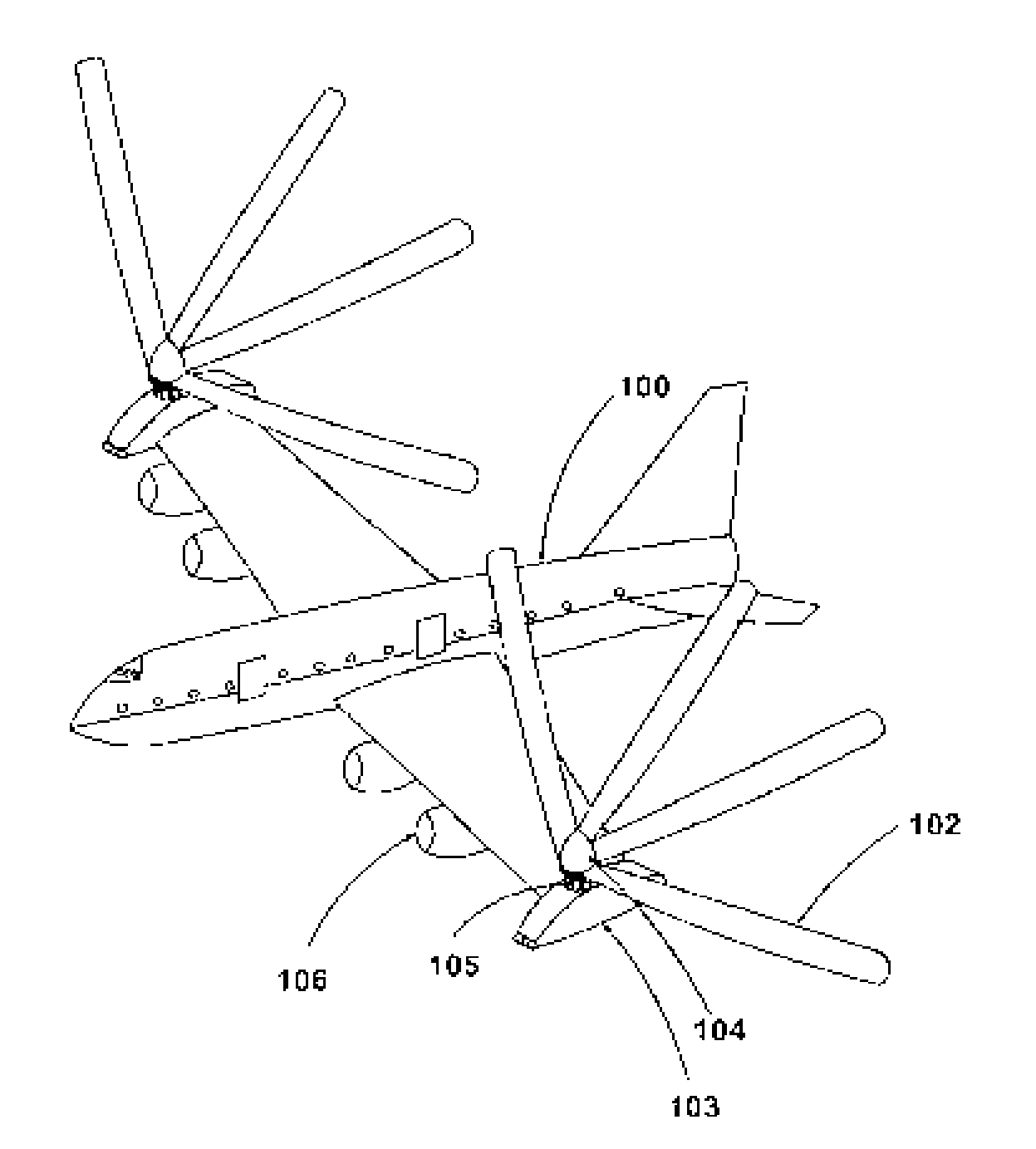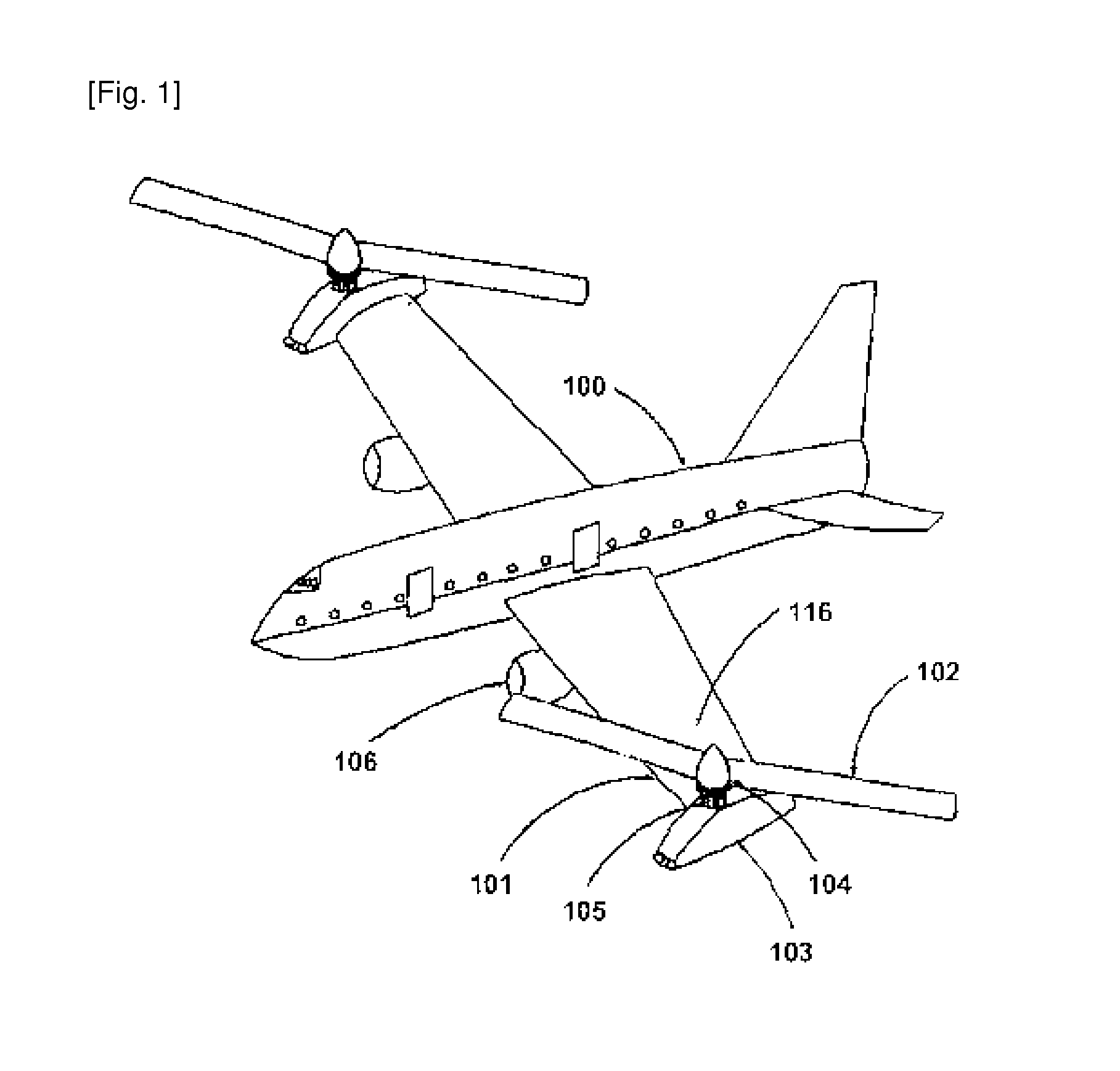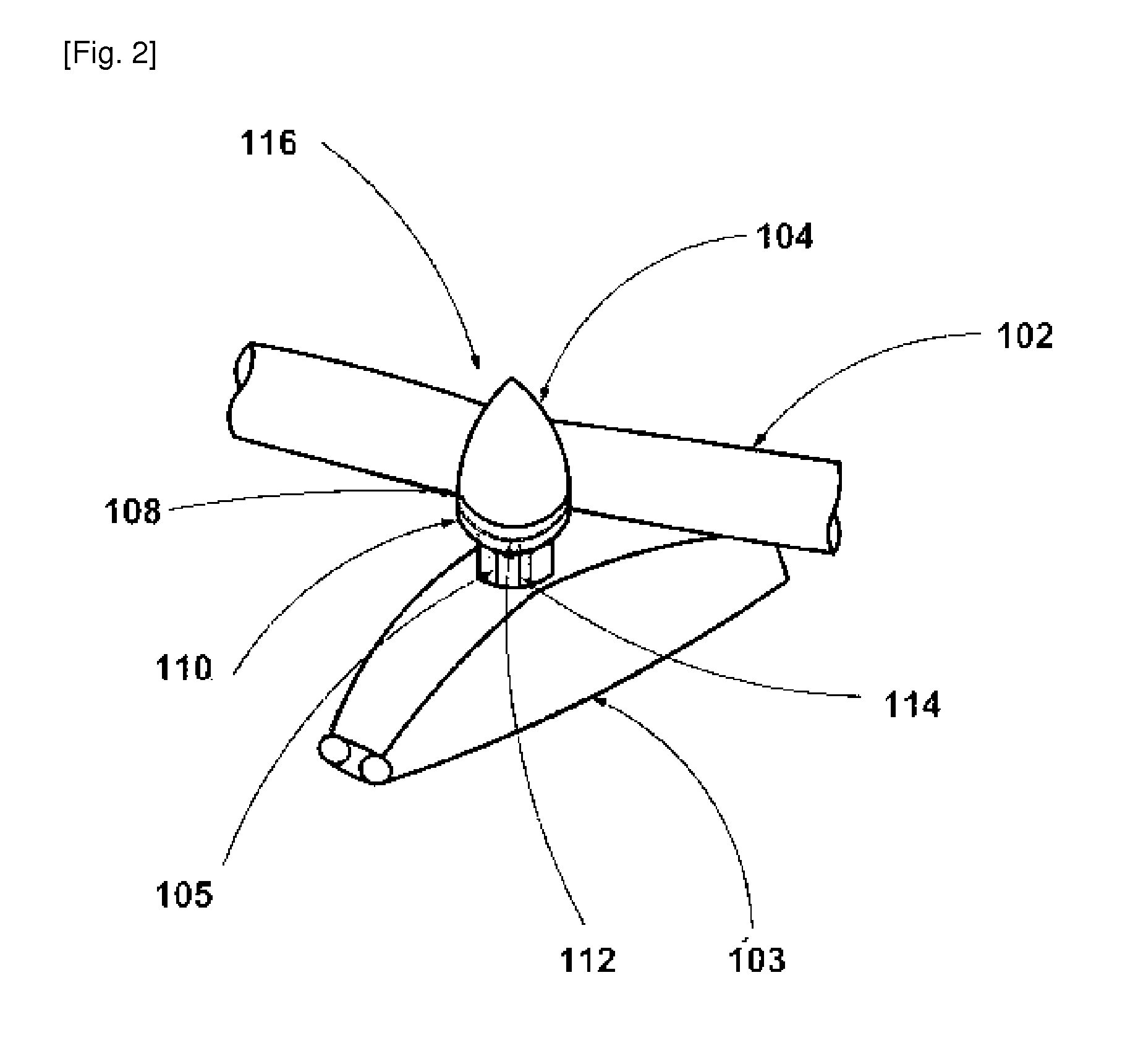Taking off and landing airplane using variable rotary wings
a variable wing, taking off and landing technology, applied in the direction of rotorcraft, vertical landing/taking off aircraft, vehicles, etc., can solve the problems of loss of human lives, limited maximum speed of a normal vtol, and a lot of difficulties, so as to achieve the effect of ensuring stability
- Summary
- Abstract
- Description
- Claims
- Application Information
AI Technical Summary
Benefits of technology
Problems solved by technology
Method used
Image
Examples
Embodiment Construction
[0023]As illustrated in the figures, the entire composition of this invention is comprised of a flying body (100), the flying wings (101) mounted unmovably on the sides of the body (100), the rotary wings (102) which are rotated by the rotary wing engines (103) mounted on the sides of the above mentioned flying wings (101) and the rotary wing angle adjusting means (104) mounted on the center of the rotary wings (102).
[0024]The VTOL (100) rotates the rotary wings (102) to generate lift when taking-off; and when going forward, the lower swash plate (110) is tilted toward the front of the VTOL (100) by the hinge type rod (114) connected to the control device in the operating seat making the upper swash plate (108) connected with the lower swash plate (110) through the ball bearing (112) rotate in the tilted state and making the rotary wing angle adjusting means (104) mounted on the upper swash plate (108) rotate together in the tilted state and consequently the angle of attack of the w...
PUM
 Login to View More
Login to View More Abstract
Description
Claims
Application Information
 Login to View More
Login to View More - R&D
- Intellectual Property
- Life Sciences
- Materials
- Tech Scout
- Unparalleled Data Quality
- Higher Quality Content
- 60% Fewer Hallucinations
Browse by: Latest US Patents, China's latest patents, Technical Efficacy Thesaurus, Application Domain, Technology Topic, Popular Technical Reports.
© 2025 PatSnap. All rights reserved.Legal|Privacy policy|Modern Slavery Act Transparency Statement|Sitemap|About US| Contact US: help@patsnap.com



